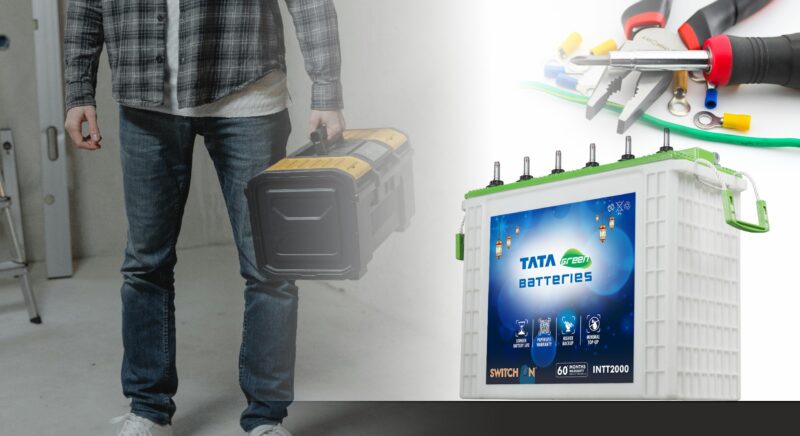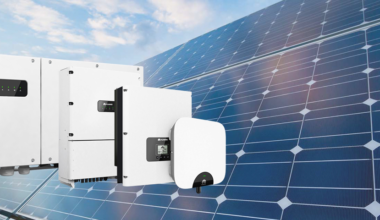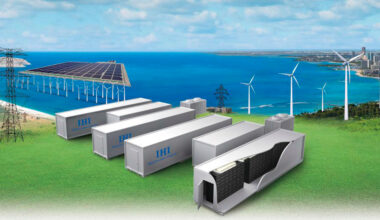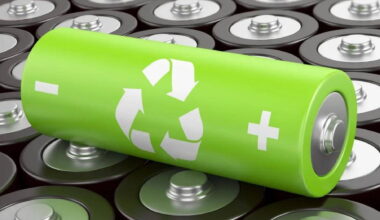How Best to Make Your Tubular Battery Last Over 5 Years
Introduction
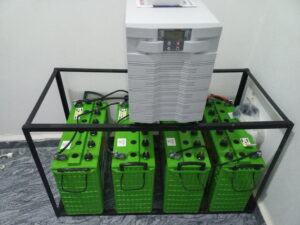
- What Are Tubular Batteries and Why Are They Important?
- The Lifespan of Tubular Batteries
1. Understanding the Basics of Tubular Batteries
- How Do Tubular Batteries Work?
- Key Components of a Tubular Battery
2. Why Tubular Batteries Can Last Over 5 Years
- The Science Behind Tubular Batteries’ Longevity
- Factors That Affect the Lifespan of Tubular Batteries
3. Proper Installation of Tubular Batteries
- Choosing the Right Location for Installation
- Common Installation Mistakes to Avoid
- Professional Installation vs DIY: What’s Best?
4. Regular Maintenance for Long Battery Life
- Checking the Water Level in Tubular Batteries
- Cleaning the Terminals Regularly
- The Importance of Checking for Corrosion
5. Proper Usage and Avoiding Overcharging
- Why Overcharging Can Reduce Battery Life
- Best Practices for Charging Tubular Batteries
- Understanding Charge Cycles
6. Keep Tubular Batteries Cool
- The Effects of High Temperatures on Tubular Batteries
- How to Keep Your Tubular Battery Cool
- Choosing the Right Environment for Your Tubular Battery
7. Monitor and Control Battery Discharge
- The Importance of Avoiding Deep Discharges
- Why Regular Discharge and Recharge Cycles Are Vital
8. Proper Storage of Tubular Batteries
- How to Store Tubular Batteries When Not in Use
- Ideal Storage Conditions for Tubular Batteries
9. Choosing High-Quality Tubular Batteries
- What Makes a Tubular Battery Durable?
- Best Tubular Batteries on the Market in 2025
10. Battery Management Systems (BMS)
- How BMS Can Help Prolong the Life of Tubular Batteries
- The Role of BMS in Battery Health Monitoring
11. Checking Battery Voltage and Performance
- Why Voltage Matters for Tubular Batteries
- How to Test Your Tubular Battery’s Voltage
- When to Replace Tubular Batteries
12. Signs Your Tubular Battery Needs Attention
- How to Detect Early Warning Signs of Battery Wear
- Indicators That It’s Time for a Battery Check
13. Avoiding Common Tubular Battery Problems
- Preventing Sulfation in Tubular Batteries
- How to Prevent Short Circuits in Your Tubular Battery
- How to Avoid Battery Leakages
14. The Importance of Proper System Integration
- How to Integrate Tubular Batteries with Solar Systems
- Using the Right Inverters with Your Tubular Battery
- Optimizing the Entire Energy Storage System
15. Conclusion
- Final Tips for Prolonging the Life of Your Tubular Battery
FAQs
- 1. How long do tubular batteries last on average?
- 2. Can I install a tubular battery myself?
- 3. How do I know when to replace my tubular battery?
- 4. Why is my tubular battery losing charge so quickly?
- 5. What’s the best way to extend the lifespan of my tubular battery?
How to Make Your Tubular Battery Last Over 5 Years
Introduction
What Are Tubular Batteries and Why Are They Important?
If you’re looking for a reliable energy storage solution, tubular batteries are a fantastic option. These batteries are widely used for solar systems, inverters, and off-grid setups, thanks to their long lifespan and deep discharge capabilities. Unlike regular lead-acid batteries, tubular batteries offer better performance, longer service life, and greater efficiency.
The Lifespan of Tubular Batteries
Generally, tubular batteries are designed to last 5 years or more, depending on factors such as usage, maintenance, and storage conditions. But with proper care, you can extend the lifespan of your tubular battery to over 5 years. Let’s take a deep dive into the key aspects of maintaining these batteries and ensuring they last as long as possible.
Read Also: Top 10 Best Solar Batteries Currently in the Market
1. Understanding the Basics of Tubular Batteries
How Do Tubular Batteries Work?
Tubular batteries are a type of lead-acid battery used for solar and backup power systems. They are designed with tubular positive plates, which make them highly durable and capable of deep discharge cycles. When a tubular battery is charged, the chemical reaction between the lead plates and electrolyte stores energy, which is released when the battery is used to power appliances.
Key Components of a Tubular Battery
- Positive Plates: Tubular plates are designed to hold more active material, which increases the battery’s capacity.
- Negative Plates: These plates are typically made from lead, and they help with the flow of electricity.
- Electrolyte: A mixture of sulfuric acid and water, the electrolyte facilitates the chemical reactions that charge and discharge the battery.
- Container: The battery is housed in a strong, durable container to protect it from external damage.
2. Why Tubular Batteries Can Last Over 5 Years
The Science Behind Tubular Batteries’ Longevity
What sets tubular batteries apart is their robust construction. Unlike other types of lead-acid batteries, the tubular design protects the battery’s positive plates from erosion, a common issue that causes other batteries to fail. The thick plates help reduce internal damage, making tubular batteries last much longer.
Factors That Affect the Lifespan of Tubular Batteries
While tubular batteries are designed for long life, several factors can affect their performance, including:
- Battery Usage: Overuse or frequent deep discharge cycles can shorten a battery’s lifespan.
- Maintenance: Lack of maintenance, such as failing to check water levels or clean terminals, can reduce battery efficiency.
- Temperature: Extreme temperatures can cause batteries to fail faster.
3. Proper Installation of Tubular Batteries
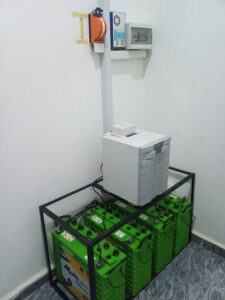
Choosing the Right Location for Installation
Tubular batteries should be installed in a cool, dry area, away from direct sunlight or extreme temperatures. The ambient temperature can affect the battery’s charging and discharging cycles, so placing the battery in a well-ventilated space ensures optimal performance.
Common Installation Mistakes to Avoid
- Wrong Orientation: Make sure the battery terminals are positioned correctly and not submerged in liquid.
- Poor Ventilation: Batteries can generate gas during charging, so installing them in a ventilated area is crucial.
- Incorrect Wiring: Always use the proper gauge wire and ensure the system is grounded.
Professional Installation vs DIY: What’s Best?
While DIY installation is possible, it’s often best to have a professional install your tubular battery. A professional ensures that the system is properly integrated, minimizing the risk of damage and ensuring optimal performance.
4. Regular Maintenance for Long Battery Life
Checking the Water Level in Tubular Batteries
One of the simplest and most important maintenance tasks is ensuring the water level in the battery cells remains adequate. Use distilled water to refill the batteries, as tap water contains minerals that can damage the internal components.
Cleaning the Terminals Regularly
Corrosion on the battery terminals can impact performance and lead to battery failure. Regularly clean the terminals with a solution of baking soda and water to prevent corrosion build-up.
The Importance of Checking for Corrosion
Check the battery for corrosion regularly. This can occur due to excess acid fumes or moisture, which can disrupt the flow of electricity and cause permanent damage.
5. Proper Usage and Avoiding Overcharging
Why Overcharging Can Reduce Battery Life
Overcharging is one of the most common causes of premature battery failure. When a tubular battery is left on charge for too long, it can cause the plates to sulfate, reducing the battery’s efficiency. Always ensure that your system has an automatic charge controller to prevent overcharging.
Best Practices for Charging Tubular Batteries
- Avoid charging your battery to its full capacity if it’s not necessary.
- Monitor charge levels using a battery charge controller.
- Always disconnect the battery once it’s fully charged to prevent overcharging.
Understanding Charge Cycles
Every battery has a limited number of charge cycles—the number of times it can go through a full discharge and recharge. To maximize the lifespan of your tubular battery, try to avoid deep discharges and use partial discharges when possible.
6. Keep Tubular Batteries Cool
The Effects of High Temperatures on Tubular Batteries
Extreme temperatures can degrade the internal components of your tubular battery. High temperatures increase the rate at which sulfation occurs, shortening the battery’s life expectancy.
How to Keep Your Tubular Battery Cool
Ensure that your battery is stored in a cool, dry place. If your area experiences high temperatures, consider installing a cooling system to prevent overheating.
Choosing the Right Environment for Your Tubular Battery
The optimal temperature range for tubular batteries is typically between 20-25°C. Avoid placing the battery in places exposed to direct sunlight, kitchens, or garages with high ambient temperatures.
7. Monitor and Control Battery Discharge
The Importance of Avoiding Deep Discharges
Deep discharges are one of the leading causes of battery failure. Always try to keep the battery’s charge level above 50% to preserve its lifetime.
Why Regular Discharge and Recharge Cycles Are Vital
Ensure your tubular battery is regularly discharged and recharged to maintain its performance. Solar systems often have charge controllers that manage this cycle automatically.
8. Proper Storage of Tubular Batteries
How to Store Tubular Batteries When Not in Use
If you’re storing a tubular battery for an extended period, fully charge it before storage. Store the battery in a cool, dry place and check it every 3-6 months to ensure it’s not overcharged or undercharged.
Ideal Storage Conditions for Tubular Batteries
When storing, make sure the battery voltage is below 100% to prevent it from degrading over time. Use a battery monitor to track its condition.
Conclusion
Final Tips for Prolonging the Life of Your Tubular Battery
Taking care of your tubular battery involves understanding how it works, regular maintenance, and taking proper precautions to avoid common issues such as overcharging or extreme temperatures. By following these tips, you can easily extend the life of your tubular battery for over 5 years. With proper care, these batteries can provide reliable energy storage for your solar system, inverter, or off-grid setup.
Read Also: Top 5 Best Tubular Batteries Currently in the Nigeria Market
FAQs
1. How long do tubular batteries last on average?
With proper maintenance, a tubular battery can last 5-7 years.
2. Can I install a tubular battery myself?
While installation is possible, professional installation is recommended to ensure optimal performance.
3. How do I know when to replace my tubular battery?
When your battery loses charge quickly, fails to hold charge, or is over 5 years old, it’s time to consider a replacement.
4. Why is my tubular battery losing charge so quickly?
This could be due to overcharging, corrosion, or extreme temperatures affecting the battery’s performance.
5. What’s the best way to extend the lifespan of my tubular battery?
Regular maintenance, proper installation, and ensuring the battery stays within optimal temperature ranges will help extend its lifespan.
